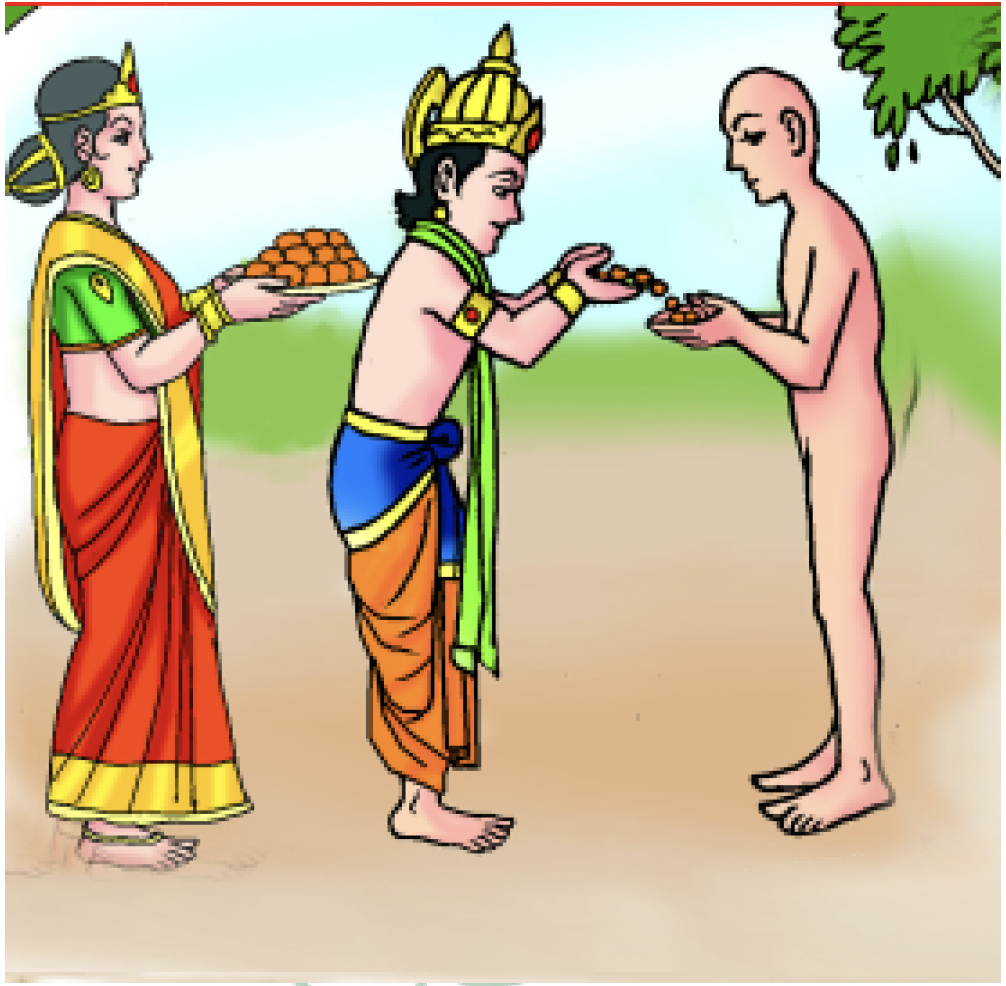Acharya Ravishen Swami
Acharya Ravishen Swami; this name is well-known by the whole Digamber Jain community for the composition of his great Jain Scripture "Padmapuran", also known as "Jain Ramayana".

About
Based on the description of the trees in 43rd Chapter (parv) of Padmapuran, it can be rightly assumed that he was born in the southern part of India.
Padmapuran was written in 677 A.D. (1207 years after Bhagwaan Mahaveer and approximately 1343 years from today), so we can rightly understand that his time was around in 6th and 7th century.
Unfortunately, there is a very little detail available to us regarding the birthplace, childhood, youth, diksha, works etc. about Acharyadev's life.
How great our Digamber Jain saints are! Even after giving so much invaluable treasure of knowledge to us, they have not mentioned anything about themselves!
Acharya Parampara
In the Chapter 123, Shlok 167 of Padmapuran, Acharyadev has described his Guru-parampara as below:
"After Tirthankar Mahaveer, there was a great saint who was well-versed with the Aagam's knowledge named Shri Indra guru. His disciple (shishya) was Shri Divakar Yati; whose disciple was Shri Arhan Muni. Shri Arhan Muni's disciple was Shri Lakshmansen, and Shri Lakshamsen's disciple was Acharya Ravishen Swami."
Although, there is no definite references available to us today about which 'Sangh'/Gan-Gachak Acharyadev belonged to; but from the suffix 'sen' after his name, it can be assumed that he belonged to Sen-sangh
Works
"Padmapuran" is the first Scripture (Shastra/Granth) ever composed in the Sanskrit Kavya (Poetry) Literature; in which Acharyadev, with 41 different types of Swars (musical notes/tunes) has beautifully narrated the chronicles of Bhagwaan Ramchandra. In the Prathmanuyog literature, this was one of the first Jain Scriptures in which such deep description can be seen.
The beautiful story-telling and narration with the help of different types of Kavya-ras like Shringaar-ras, Karuna-ras etc. Each alphabet, each word of this Shastra resonates Vairagya and Veetragta.
Why Prathmanuyog scriptures has Shringaar-ras etc. narrations of materialistic pleasures that leads to Raag (attachment), while our aim is Veetragta?
It is a common human tendency to get attracted and connect to stories more. Especially for the souls that are currently blinded into materialistic pleasures and worldly affairs, Prathmanuyog scriptures can be a great source for them to bend towards the real path of Salvation.
Because Prathmanuyog scriptures have the historical stories of great personalities and their various inspiring life-events, one can relate, learn and take inspirations from it. After all, Jain Prathmanuyog scriptures are filled with Vairagya and different fundamentals, morals, ethics, lifestyle etc. are served in a form of a story.
Padmapuran, also known as Padmacharitam, where the real history about Bhagwaan Balbhadra Ramchandra, Bhagwaan Hanumaan, Bhagwaan Sugriv, Sati Sita, Narayan Lakshman and Pratinaaryan Raavan is explained; which ends and refutes all the falsy and imaginary facts existing in the other versions of Ramayana. It is indeed a great blessing to us to have got the right knowledge, resolving all our doubts about the Ramayana.
Although it is known that Acharyadev has taken inspiration from the Prakrit Granth 'Padmachariyam', composed by Shri Vimalsuri; Padmapuran apparently still is a self-written (maulik) composition of Acharya Ravishen.
There are a total of 123 Chapters (parv) divided into 6 Parts (khands) in which different events such as details about past-lives of Bhagwaan Ramchadra, Sati Sita, Lakshman, Raavan etc., birth, kingdom, Sita's Abduction, war between Ram-Lakshman and Raavan, birth of Lav-kush, Sita's Agni-pariksha, diksha by Sitaji, vairagya of Ramchandraji to attaining Moksh from Mangi-Tungi Hills; everything is explained in great depth! This granth is 18,000 shlok-praman!
पद्मपुराण के रचयिता आचार्यदेव रविषेण भगवंतको कोटि कोटि वंदन